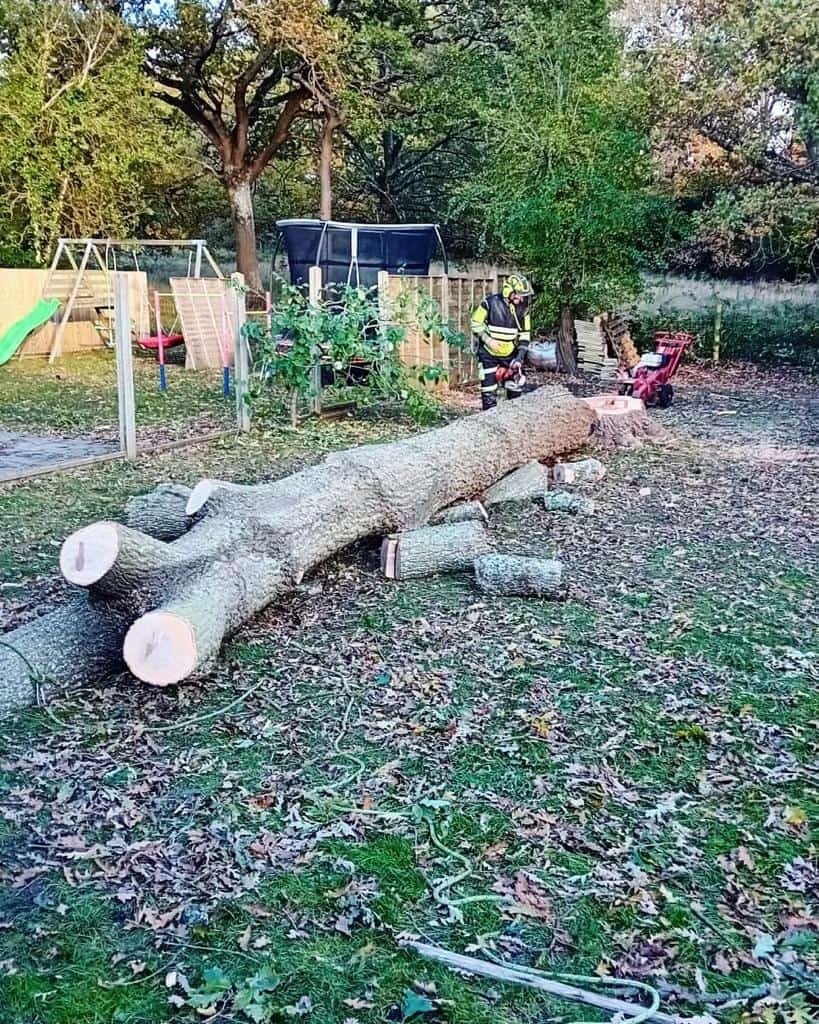When a tree is removed due to disease or damage, the stump left behind can seem harmless. However, leaving a stump in your garden can create significant risks, particularly when it comes to the spread of tree diseases. At NS Tree Surgery Hook, we specialise in stump grinding services that not only remove the unsightly remains of felled trees but also help prevent the spread of tree diseases. In this blog post, we’ll explore how stump grinding plays a crucial role in safeguarding your garden from further damage.
1. Eliminating the Source of Infection
One of the most important benefits of stump grinding is that it removes the primary source of infection from your garden. Tree diseases such as root rot, honey fungus, or canker can live in the remaining stump and root system. If left untreated, these infections can spread to nearby trees and plants. By grinding the stump down below ground level, you effectively remove the diseased tissue and halt the potential spread of pathogens to healthy trees in the area.
2. Preventing Fungus Growth
Tree stumps are highly susceptible to fungal growth, particularly if the tree was removed due to disease. Fungi thrive in the decaying wood of a stump, which can become a breeding ground for diseases like honey fungus, a particularly aggressive pathogen that can spread to other trees. Stump grinding removes the decaying material where fungi would otherwise take hold, keeping your garden free from harmful fungal infections.
3. Controlling Root Disease Spread
In addition to removing the stump, grinding disrupts the remaining root system. This is especially important for trees that were felled due to root diseases such as Phytophthora or Armillaria (honey fungus). These diseases can spread through the roots, even after the tree has been removed. By grinding the stump and severing the roots, you minimise the chances of the disease spreading underground to infect nearby trees.
4. Protecting Nearby Trees
If a diseased tree is removed but the stump is left untreated, it can pose a risk to other healthy trees in your garden. Tree roots often intertwine, allowing diseases to spread easily from one tree to another. Stump grinding ensures that the diseased tree’s roots no longer have the potential to come into contact with neighbouring root systems, creating a healthier environment for the remaining trees.
5. Enhancing Soil Health
A rotting stump can affect the quality of the soil in your garden. As the stump decays, it can release pathogens into the soil that weaken the health of nearby plants and trees. Stump grinding not only removes the physical stump but also reduces the risk of soil contamination. By eliminating the source of decay, you help preserve the quality of the soil, allowing other trees and plants to thrive in a healthier environment.
6. Preventing Pest Infestation
Tree stumps are a magnet for pests, including beetles, termites, and other wood-boring insects. These pests are not only attracted to the decaying wood but can also carry and spread tree diseases. Stump grinding removes the food source for these pests, discouraging them from settling in your garden and reducing the risk of disease transmission through insect infestation.
Conclusion
Stump grinding is a crucial step in preventing the spread of tree diseases and protecting the health of your garden. By removing the diseased stump and severing the root system, you eliminate the risk of infection spreading to other trees and plants. At NS Tree Surgery Hook, we provide expert stump grinding services that ensure your garden remains free from the dangers of tree diseases and fungal infections.
Call us on:01256 577 998
Click here to find out more about NS Tree Surgery Hook
Click here to complete our contact form and see how we can help with your tree needs.

